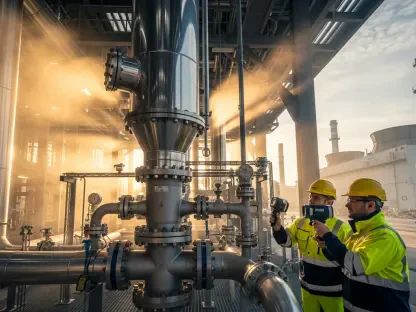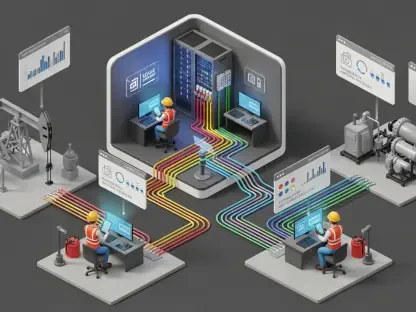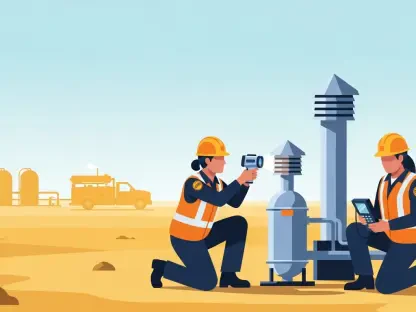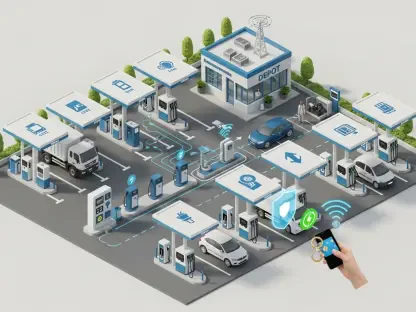The battery industry is on the cusp of a seismic transformation, driven by remarkable technological advancements and surging demand. This phenomenon is largely enabled by the rapid adoption of electric vehicles (EVs) and other energy storage solutions, indicating a significant shift away from traditional fossil fuel-based technologies. However, as the sector expands its global footprint, several pivotal factors and challenges must be examined to ensure long-term sustainability and integration.
Regional Dynamics and Market Shifts
China remains the dominant force in battery production, manufacturing over three-quarters of all batteries sold worldwide. The country’s extensive manufacturing expertise and efficient supply chains provide it with a significant competitive edge. In 2024 alone, the average price of batteries in China fell nearly 30%, outpacing decreases seen in Europe and North America. This reduction can be attributed to several factors including superior manufacturing yields by industry giants such as CATL and BYD and a highly integrated supply chain.
Despite China’s current dominance, other regions are making notable strides in boosting their battery production capabilities. Europe, although currently facing challenges such as higher manufacturing costs and delays in expansion plans, is actively working to strengthen its battery ecosystem. Policies designed to promote domestic demand and investments are starting to gain traction. Additionally, Asian manufacturers, particularly from Korea, have been stepping into the European market. Collaborative ventures, like the Stellantis-CATL joint enterprise, are pivotal in Europe’s effort to close the cost-manufacturing gap with China.
Apart from China and Europe, other regions such as South Korea, Japan, and the United States are significantly ramping up their production capacities. South Korea and Japan, both renowned for their technological expertise, are leveraging their experience to capture a larger share of the global battery market. Korea is leading in overseas manufacturing capacity, and Japan is at the forefront of advancements in solid-state battery technologies. Meanwhile, the United States has witnessed a doubling of its battery manufacturing capacity since 2022, facilitated by supportive tax credits and other incentives. Emerging hubs like Southeast Asia and Morocco are also drawing significant investments due to their resource advantages and strategic trade agreements.
Technological Innovations and Advancements
Technological innovations within the battery industry have been crucial drivers of falling prices and improving battery performance. Ongoing research and development in areas like lithium-iron phosphate (LFP) batteries have significantly enhanced the competitiveness of these technologies. Initially facing critiques over energy density, extensive R&D efforts have positioned LFP batteries as viable alternatives in terms of both cost and range. Nearly half of the global EV market now utilizes LFP batteries, reflecting their growing acceptance and technological maturity.
Solid-state battery technology represents another major area of advancement within the industry. Pioneered primarily by countries like Japan, solid-state batteries promise to offer safer and more energy-dense solutions compared to traditional lithium-ion batteries. This technology is particularly attractive for its potential to overcome existing limitations related to battery safety and energy capacity, opening pathways for wider adoption in various applications ranging from consumer electronics to large-scale energy storage systems.
These technological advancements are not confined to battery materials alone. Innovations in manufacturing processes, automation, and digitalization are also contributing to reduced production costs and enhanced scalability. By embracing modern manufacturing techniques, battery producers can achieve the economies of scale necessary to meet the surging global demand for energy storage solutions. In this rapidly evolving landscape, staying ahead requires continuous investment in R&D and a keen focus on emerging trends and technologies.
Supply Chain Diversification and Security
The concentration of battery supply chains in a few regions has sparked significant concerns regarding security and resilience. Governments and industry stakeholders are increasingly calling for diversified production capabilities to mitigate the risks associated with supply chain disruptions. However, diversifying the supply chain presents substantial challenges, as it requires time, sustained investment, and the development of new expertise. Establishing new manufacturing hubs in resource-rich regions like South America, Africa, and Australia will be crucial to achieving a more balanced and secure supply chain.
Ensuring the consistency of raw material supplies remains a significant aspect of these diversification efforts. Key battery minerals such as lithium, cobalt, and nickel are essential for battery production, and their availability can significantly impact production capabilities. Exploring alternative sources and investing in mining operations in underutilized regions are steps towards reducing dependency on dominant suppliers and enhancing global supply chain resilience.
Governments are playing a proactive role in these efforts by implementing policies and incentives to encourage the growth of domestic battery industries. Such measures are essential for attracting investments and fostering innovations within the sector. International collaboration is also vital in addressing supply chain challenges. By forming partnerships with resource-rich countries, major battery producers can secure a steady supply of raw materials and promote technological exchanges that benefit all parties involved. Collaborations between countries and companies are expected to drive innovation and ensure the stability and security of the global battery supply chain.
The Role of Government Policies and International Collaboration
Government initiatives and policies are pivotal in shaping the future of the battery industry. In countries like the United States, supportive tax credits and incentives have played a crucial role in encouraging the expansion of battery manufacturing capacities. These measures are designed to attract investments, stimulate domestic production, and ultimately make the battery industry more competitive on a global scale. By providing a favorable regulatory and financial environment, governments can catalyze growth and innovation within the sector.
International collaboration is another key aspect of building a competitive, secure, and sustainable battery ecosystem. Establishing partnerships between resource-rich countries and major battery producers can drive innovation and ensure supply chain stability. For example, collaborative ventures that focus on mining and processing essential battery minerals can help alleviate supply chain bottlenecks and diversify production sources. Additionally, sharing technological expertise and best practices can enhance the overall capabilities of the global battery industry.
The importance of a coordinated international approach cannot be overstated, particularly in addressing the environmental and ethical implications of battery production. Sustainable mining practices, ethical labor standards, and effective recycling mechanisms are critical to the long-term viability of the battery industry. Governments and industry players must work together to establish and enforce regulations that promote sustainability, transparency, and accountability throughout the supply chain. By doing so, the industry can mitigate negative environmental impacts and ensure that the benefits of battery technology are realized in a socially responsible manner.
Navigating Opportunities and Challenges
The battery industry is poised for a massive transformation, fueled by impressive technological advancements and increasing demand. This shift is primarily driven by the rapid adoption of electric vehicles (EVs) and other energy storage solutions, suggesting a significant move away from reliance on traditional fossil fuel-based technologies. The growth of the battery industry is not just a regional phenomenon; it is expanding its footprint globally, reflecting its critical role in the transition to cleaner energy.
With this rapid expansion, it’s crucial to take a close look at several key factors and challenges to ensure long-term sustainability and successful integration. Environmental concerns, raw material supply chains, energy efficiency, and recycling methods are just a few of the pressing issues that need addressing. The industry’s growth must balance technological innovation with environmental stewardship.
Government policies and international regulations will also play a pivotal role in shaping the future of the battery industry. Supportive policies can encourage investment in research and development, leading to even more advanced and sustainable battery technologies. However, achieving these goals requires a concerted effort from all stakeholders, including manufacturers, policymakers, and consumers. As we stand at the brink of this significant transition, addressing these challenges head-on will be crucial for the industry’s sustained growth and integration.









